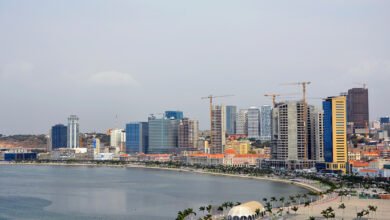
Moody’s Ratings (Moody’s) has downgraded Kenya’s local and foreign-currency long-term issuer ratings and foreign-currency senior unsecured debt ratings to Caa1 from B3 – implying a negative outlook.
A rating within speculative grade Moody’s Long-term Corporate Obligation Rating. Obligations rated Caa1 are judged to be of poor standing and are subject to very high credit risk. Rating one notch higher is B3. Rating one notch lower is Caa2.
Negative Outlook
The downgrade of Kenya’s rating reflects significantly diminished capacity to implement revenue-based fiscal consolidation that would improve debt affordability and place debt on a downward trend.
It comes a week after the economy was marred by antigovernment protests by Gen Zs over Finance Bill, 2024 that forced President William Ruto to kill the Bill.
President Ruto has instead embarked on austerity measures by cutting down on government expenditure to compensate on the lost Ksh.346 billion (or 1.9 percent of the GDP) which the Bill was to generate.
Moody’s worries that President Ruto’s decision not to pursue planned tax increases and instead rely on expenditure cuts to reduce the fiscal deficit represents a significant policy shift with material implications for Kenya’s fiscal trajectory and financing needs.
Kenya plans to reduce spending by Ksh.177 billion, and increase borrowing and the fiscal deficit to 4.6% of GDP larger by 1.3% of GDP compared with the original 3.3% of GDP budget for fiscal 2025.
“We expect Kenya’s fiscal deficit to average 4.4% of GDP in fiscal 2025 (the year ending in June 2025) and fiscal 2026.
Also Read: Kenya Needs $3 Billion Annually in Debt Financing, says Moody’s
Although this represents a smaller deficit compared to 5.9% of GDP in fiscal 2024, it implies a slower pace of fiscal consolidation compared with our previous forecast, with government debt now stabilizing in contrast to our previous anticipation for a gradual decline in debt,” says Moody’s.

Despite backtracking on the controversial Bill, Kenyans have called for President Ruto’s resignation and have accused him of making false promises in his manifesto.
Willingness for New Revenue Measures
And according to Moody’s, the heightened tensions in the country imply no willingness by the government to implement new revenue measures to get the country out of its current fiscal strain.
“We do not expect the government to be able to introduce significant revenue-raising measures in the foreseeable future.
As a result, we now expect the fiscal deficit to narrow more slowly, with Kenya’s debt affordability remaining weaker for longer.”
The rating firm also affirmed that “larger financing needs stemming from a wider deficit increase liquidity risk against more uncertain external funding options.”
Negative Outlook Reflection
The negative outlook reflects downside risks related to government liquidity.
Moody’s updated forecasts continue to assume a narrowing of the fiscal deficit through spending cuts, “ but at a more gradual pace than we previously assumed.”
Larger financing needs and/or an increase in borrowing costs would amplify liquidity risks. In particular, slower fiscal consolidation would risk constraining external funding options even more, including diminishing support from multilateral creditors which have been the largest source of external financing since 2020.
And larger financing needs would risk reducing domestic appetite for government securities, which would challenge the government’s ability to continue servicing domestic debt.
Kenya’s local currency (LC) ceiling was lowered to B1 from Ba3, maintaining a three- notch difference with the sovereign rating, which reflects relatively weak institutions and policy predictability and moderate political risk set against a relatively small footprint of the government in the economy and limited external imbalances.
The foreign currency (FC) ceiling on the other hand, was lowered to B2 from B1, one-notch below the LC ceiling, which reflects relatively low external debt and a moderately open capital account, which reduce, although do not remove entirely, the incentives or need to impose transfer and convertibility restrictions in scenarios of intensifying financial stress.
What B3 Rating Meant For Kenya
Kenya’s previous B3 rating was predicated on the government continuing with a fiscal consolidation strategy that encompassed significant revenue-raising measures that would narrow the fiscal deficit, contain the debt burden and at least stabilize debt affordability.
These efforts ensured multilateral support from the International Monetary Fund (IMF) and others alleviates financing pressure from Kenya’s large external amortizations.
The negative outlook captured downside risks primarily related to liquidity risk and elevated refinancing needs against limited external financing options and reliance on expensive domestic financing of the fiscal deficit.





